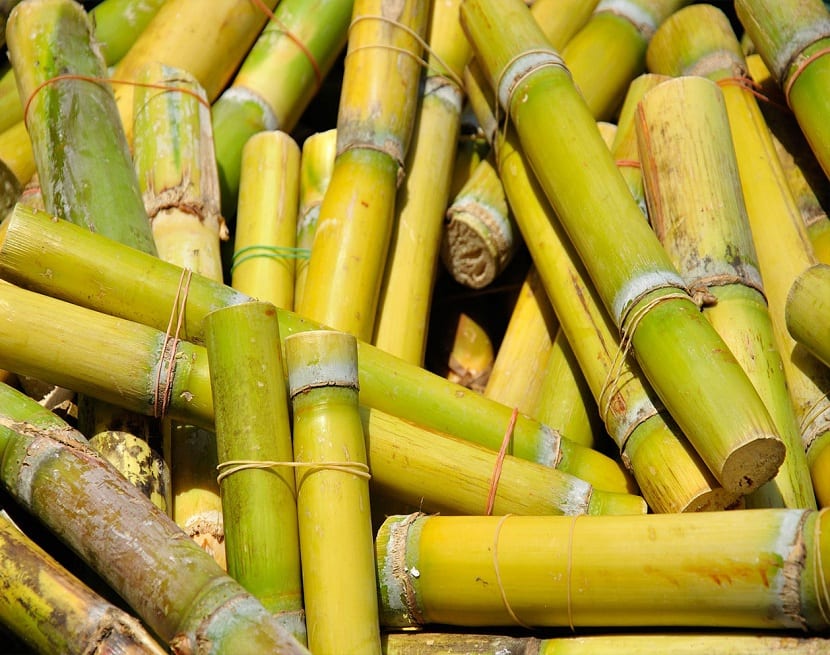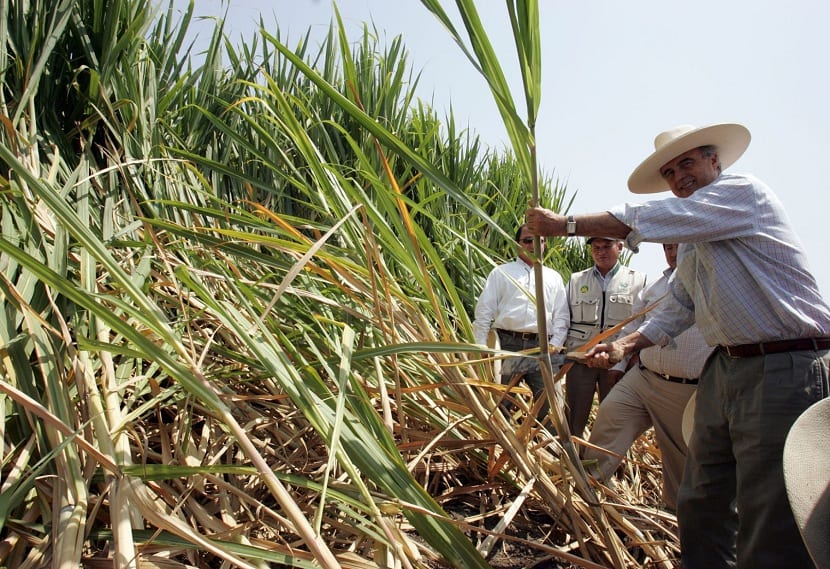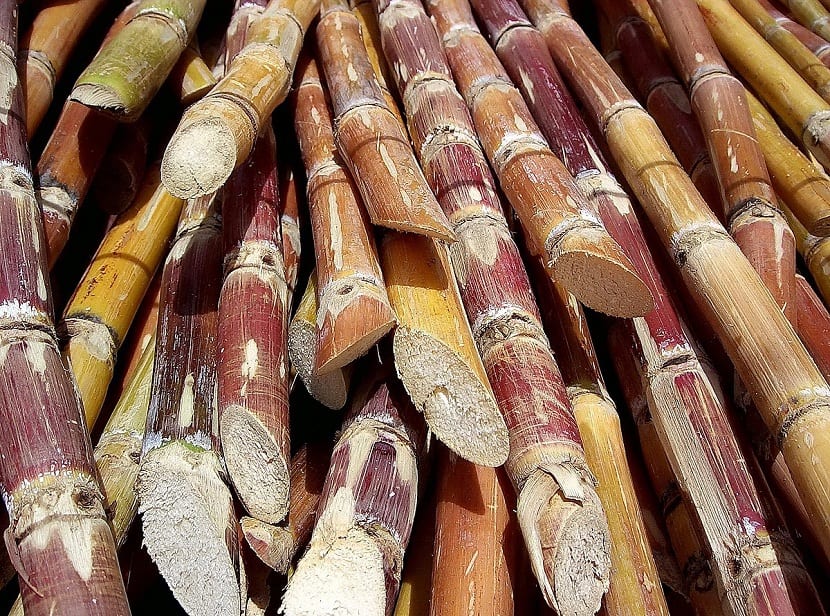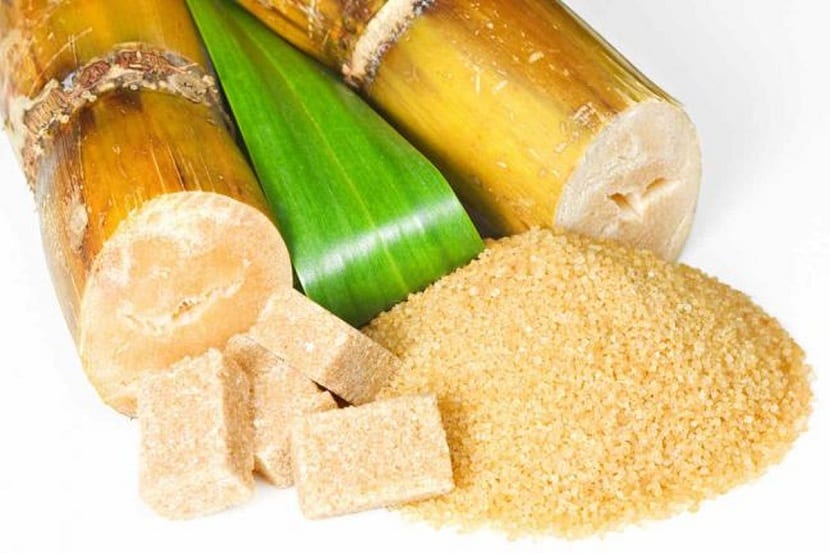
Surely you have ever consumed cane sugar in a sweet or yogurt. And it is that about half of all the sugar in the world is extracted from a plant known as sugar cane. Its scientific name is Saccharum officinarum and it is a plant that at first glance does not seem to have anything special. However, it is the basis of one of the most consumed products worldwide. Its excessive consumption can harm health, but it is enjoyed by both young and old.
Do you want to know all the characteristics, biology and cultivation of sugar cane? In this post we tell you everything in depth 🙂
Key features

The first thing to mention about this plant is that it is herbaceous and perennial. It is part of the grass family. For this reason, it is related to other grasses such as corn, rice, oats or bamboo. It is a group of thick, hard, juicy, unbranched stems with internodes. These huge stems grow from a res of rhizomes from which secondary stems appear.
They are capable of reaching almost five meters in height. The colors that we can find in sugar cane range from green to pink or purple.
They have long, fibrous and lanceolate leaves. The edges of each blade are serrated and have a midrib. They can measure between 30 and 60 centimeters long and about 5 cm wide. It develops panicles, a type of inflorescence, in which spikelets of tiny flowers are housed and at the ends of which a kind of long and silky fluff can be seen.
The fruit of this plant is a caryopsis that is only 1,5 millimeters wide and contains a single seed inside.
Distribution area

Although this reed is scattered throughout the world, It has its origin in Southeast Asia. Possibly it began to be cultivated in the islands of the South Pacific or in New Guinea. It is there where, from 6000 a. C. began to expand. It first started in the temperate and tropical regions of mainland Asia. It then continued through the Indian subcontinent, Europe, Africa, Australia, the southeastern United States, Mexico, and South America.
Today sugarcane is mainly distributed in tropical and subtropical regions around the world. These plants have been found in our country and in South Africa. The cultivation is carried out in more than 70 countries around the world, in which the first producers are Brazil and India. They are the ones that produce half the sugarcane in the world.
Reproduction and varieties

The flowers of sugar cane are hermaphroditic. Therefore, they are capable of acting as male and female organisms at the same time. They are pollinated by the wind without the need for any insects.
Unlike other species, its cultivation is carried out mainly for its stems and not its fruits. It is able to spread without the need for pollination. It is because if we cut cuttings we can fragment the stems and reproduce them to taste. These cuttings are planted in the spring vertically and horizontally in the ground. In a short time, they will be able to develop new roots that will be used to grow another plant. The roots begin to emerge from the nodes of the stem.
Requirements for its perfect care

Sugarcane requires a fairly sunny and clear place. As for the soil, it is better that they are moist, have good drainage and are fertile. The texture can be clayey, volcanic or alluvial.
The temperatures necessary to keep it in good condition must be high. Below -5 ° C the plant could be seriously damaged that would endanger their growth and survival. Therefore, it is highly advisable to protect it from possible frost in somewhat colder climates.
The varieties of Saccharum officinarum they are usually divided into groups, such as Bourbon, Batavian, Mauritius and Otaheite, among others.
Uses of sugar cane

The product so in demand worldwide that this plant contains is the sugar obtained from the juice of the stems. The set containing the sugar is gray and greenish in color. It has a sweet taste, but a bit bitter. To make it more edible it is treated with chemicals and reduced to a syrup. Once it is obtained, it is boiled until it crystallizes. Cane sugar can be refined and is the most common form of its commercialization.
It can be said that it is the universal sweetener. It is found in millions of products of all kinds, varied between foods, desserts and drinks. There are many people who love to eat the juice directly by chewing the cane.
It must be taken into account that its consumption must be very controlled, since it is associated with obesity and diabetes. And is that cane sugar is considered a carbohydrate that provides energy to the body. That is, it is necessary for the body to perform functions, but its excess in the body is harmful. All diets that are high in sugar are associated with obesity, tooth decay, diabetes, and reduce overall quality of life. In fact, in many, many people it leads to death.
Although it seems strange, this sugar is used in medicinal uses for its antiseptic, diuretic, laxative and cardiotonic properties. For example, in South Asia it is used to treat respiratory infections and open wounds.
Another use that can be given is as fuel. Sugarcane generates large amounts of biomass that can be burned to generate electricity or biofuel.
Threats and conservation

Because it is such a highly demanded plant globally is not assessed as threatened. It is rather the opposite. Its use is very widespread as is its cultivation. Fungi, viruses, insects, and nematodes are your enemies; if these proliferate, they can cause diseases that are difficult to eradicate. Some of the organisms that can make the species sick are Allantospora radicicola, Asterostroma cervicolor, Graphium sacchari, Xanthomonas albilineans, and Trichoderma lignorum.
I hope that with this information you can learn more about where the cane sugar comes from and take it in moderation.